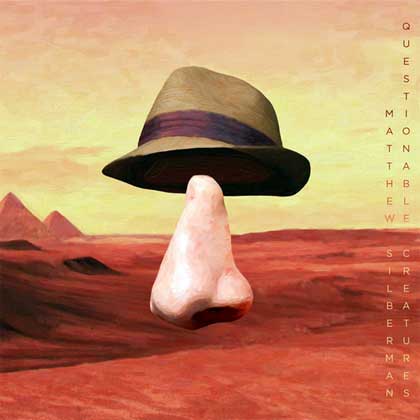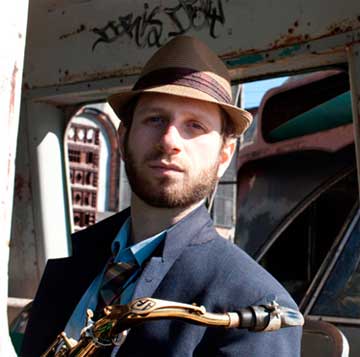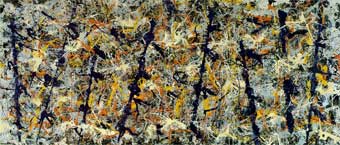Live Jazz
Matthew Silberman – tenor saxophone/compositions
Ryan Ferreira – guitar
JP Schlegelmilch – keys
Chris Tordini – bass
Alex Ritz – drums
Lilypad
Inman Square, Cambridge, MA

“Questionable Creatures” (2011-2012)
CD cover designed by Sandra Reichl
Courtesy of Matthew Silberman
Matthew Silberman, who plays tenor sax and leads the group Press Play, brought them to the Lily Pad in Inman Square from their home base in Brooklyn, NY. They offered an hour-long set as part of an evening devoted to a varied sampling of jazz groups.

Photo: www.matthewsilberman.com
The Tides opened the set with long poles of sound on tenor sax. Riffles of an elaborate piano texture filtered in, and drums ripped into the tonal walls. The long poles from the tenor sax (somehow it made me think of Jackson Pollock’s late masterpiece, Blue Poles) were echoed in the bass and guitar, almost like a giant plodding through a valley. Ryan Ferreira’s guitar struggled atonally against the tonal prevalence of the saxophone and were layered over by interesting tonal harmonies from JP Schegelmilch’s keyboard riffs. Gradually, Silberman’s long poles of sound opened into improvised ripples, beginning to evoke a bit of the flexibly cascading Charlie Parker sensibility that he credits as one of his important influences. The melding of the long poles and the riffles led to a sonorous hybrid that reminded me of the long Pharaoh Sanders – Leon Thomas tune, The Creator Has a Master Plan, from the great 1969 album, Karma, with some of Ferreira’s spookily mechanical guitar overtones creating a final frame and Lost in Space coda.

“Blue Poles” (1952)
National Gallery of Australia
Maimonides, an evocative, Hispanically influenced, tune started with a nice Spanish beat echoed between sax and bass. Inspired by the great medieval Jewish-Spanish philosopher, the piece drew visions of light and shadow in Cordoba, offering more of a classical form than did The Tides. Long tonal echoes from the sax and keyboards were counterposed by extremely energetic drumming from Alex Ritz.
Breathe started with atonal bass and jingling bells, suggesting a walk down a dark, quiet, slightly creepy lane. Long probing notes from the sax, evocative of another of Silberman’s strong influences, John Coltrane, set an attenuated pace, though with a more restless aura than was expected. A broad declaration from the sax catapulted the group into unison, with a hopeful, but not relaxed, demeanor. The beacon-like boldness was carried by the sax while Ferreira offered a newly tonal guitar accompaniment. Nice support from the keyboards rounded things out, though maintaining the oddly energetic temper for what seemed intended to be a placid tune.

Photo: www.matthewsilberman.com
Ghosts of the Prairie, played next in the live gig, also accompanies a music video of the same name on YouTube directed by Taichi Erskine (interesting name), an eerie urban noir mini-suspense-drama. The tune opened with an otherworldly, moonscape feeling, with oddly asynchronous rapping from the drums. The sax provided a very nice tonal meandering above this atonal field. The prevailing sense: it’s a jungle out there and the survival of the fittest rules. Earthquake rumblings suggested cityscapes falling apart, and a wandering around aimlessly but stressfully, though the tune, and the set, ended more peacefully.
This was not standard-form modern jazz in which an introductory tune sets the stage for a series of solos which anticipate an eventual recapitulation. Seemingly, Silberman is trying to sculpt something more angular and existential from within a tonally conventional jazz base. However, as the tune Maimonides exhibited, his experimental tonalities can also draw forth suggestive visions and create compelling scenes.
I listened to Silberman’s CD Questionable Creatures after going to the gig in Inman Square and was struck by significant differences in tonal coherence and temper between the recording and the live performance. Perhaps due to impromptu changes of personnel in the live performance, or, alternatively, to the expected greater control of the studio environment, the recorded tracks that were common – Ghost of the Prairie and Breathe – felt much more settled and put together on the disk. There was still an air of the alternative in the recorded ones, but not the sense of wandering I sometimes encountered in the live performance. The seeming intention of this as progressive and modern, but not disaggregated, jazz manifested much more in the recordings. (Though J.P. Schlegelmilch’s keyboards did not show up on the recording, but my sense was that his contribution to the live performance was particularly welcome and tonally supportive.)
The title track of the album starts with a bouncy and appealing tune that later contains some of the coloristic touches as did Maimonides (done at the gig but not on the album). There are tonally offbeat moments from the guitar that eventually prevail over the vivid, pictorial and rhythmic patterns created early on. From these pictorially vivid moments, one gets a touch of the feeling of the great Miles Davis – Gil Evans collaboration Sketches of Spain (1959-1960). Put, subsequently, through an outer space machine, mostly at the sponsorship of the guitar, one is prodded into a more abstract dimension. Some of the space travel is suggestive and interesting, some a bit too distant from its tonal and rhythmic home.
The Pharaoh’s Tomb, the last track on the CD, provided, for me, a wonderful combination of rhythmic and tonal integration, pictorial and thematic evocation and a variety of restless energy that I got from the live performance. There was a lot of Coltrane influence here; and wilder experimentation, with both recorded guitars and bass, made coherent musical sense while providing a sense of forward, somewhat unexpected, but pleasing, movement.
– BADMan
Leave a Reply